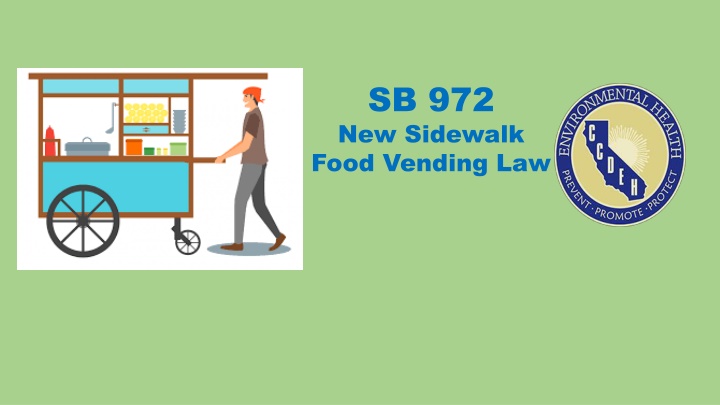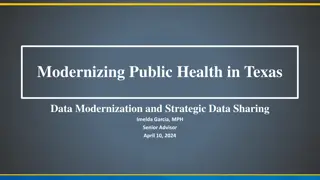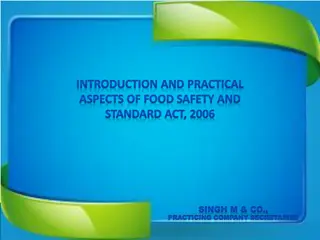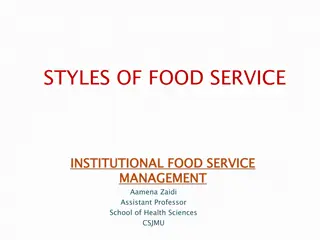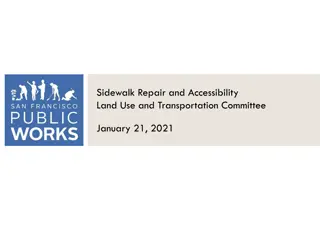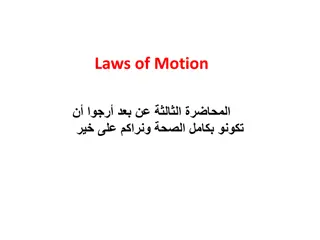Modernizing California’s Sidewalk Food Vending Laws
Introduced by Senator Lena Gonzalez, SB 972 aims to bring sidewalk food vendors under the California Retail Food Code, making it easier for micro-entrepreneurs to operate with reduced barriers. The bill expands food operations, introduces Compact Mobile Food Operations (CMFO), and allows for the sale of prepackaged non-potentially hazardous foods without a permit. It enhances economic opportunities for low-income entrepreneurs while prioritizing food safety and public health.
Download Presentation

Please find below an Image/Link to download the presentation.
The content on the website is provided AS IS for your information and personal use only. It may not be sold, licensed, or shared on other websites without obtaining consent from the author.If you encounter any issues during the download, it is possible that the publisher has removed the file from their server.
You are allowed to download the files provided on this website for personal or commercial use, subject to the condition that they are used lawfully. All files are the property of their respective owners.
The content on the website is provided AS IS for your information and personal use only. It may not be sold, licensed, or shared on other websites without obtaining consent from the author.
E N D
Presentation Transcript
SB 972 New Sidewalk Food Vending Law
Background Introduced by Senator Lena Gonzalez Intent (per Senator Lena Gonzalez official Fact Sheet): Senate Bill (SB) 972 will modernize the California Retail Food Code (CRFC) to include sidewalk food vendors and bring thousands of micro-entrepreneurs into a more equitable and well-regulated food economy while enhancing critical health and food safety regulation. SB 972 modernizes the CRFC by reducing the barriers to obtain a local health permit, which will support food vendors, opening up economic opportunities for low income entrepreneurs and improving food safety and public health for consumers.
California Retail Food Code New Chapter 11.7 Compact Mobile Food Operation Limited Food Preparation Revised Expands Food Operations Reduced Structural Requirements Structural Requirements SB 972 Summary Changes in Operational Requirements New Commissary Options Expands Cottage Food Operations Type B & Home Storage 3
What is a Compact Mobile Food Operation (CMFO)? A stand, showcase, rack, display that offers more than 25 sq ft of prepackagednon-potentially hazardous foods like prepackaged chips, nuts, bottled drinks and whole produce A pushcart, pedal-driven cart, wagon, or other nonmotorized conveyance may be approved for sale of prepackaged potentially hazardous foods or approved for limited food preparation 4
No Permit Required No health permit is required when vending food from a person, stand, rack, or cart if selling 25 square feet or less of ONLY prepackaged, non-potentially hazardous food or whole produce. >25 square feet = permit required Food must be from approved source Food must be stored, handled, displayed so as to be protected from adulteration or contamination Food must be stored/displayed at least 6 inches off the ground
Prepackaged Food Prepackaged food is food that has been processed in a permitted food facility or food establishment and properly packaged and labeled to prevent any direct human contact with the food product and the consumer prior to consumption.
Potentially Hazardous Food Potentially Hazardous Food (PHF) means a food that requires time or temperature control to limit pathogenic micro-organism growth or toxin formation. Examples include cooked meats, hot dogs, burritos, tamales, ice cream, cut melons. Non-Potentially Hazardous Food Non-Potentially Hazardous Food (Non-PHF) means food that does not require time or temperature control to prevent bacterial growth and is unlikely to cause food borne illness. Examples include chips, sodas, pretzels, cookies, popsicles.
Limited Food Preparation - revised New: Dispensing and portioning of nonpotentially hazardous food (nonPHF) or dispensing and portioning for immediate service to a customer of food that has been held at the required temperatures. New: Slicing and chopping of nonPHF food or produce that has been washed at an approved facility. New: Hot and cold holding of food that has been prepared at an approved permanent food facility. New: Reheating of food that has been prepared at an approved permanent food facility. Heating, frying, baking, roasting, popping, shaving of ice, blending, steaming or boiling of hot dogs, or assembly of non-prepackaged food. Slicing and chopping of food on a heated cooking surface during the cooking process. Juicing or preparing beverages that are for immediate service, in response to an individual consumer order, that do not contain frozen milk products.
Structural Requirements Reduced CMFO s that do NOT handle raw meats, raw poultry or raw fish: 3-compartment warewashing sink is not required if spare utensils are provided Must have a separate storage area for clean utensils and separate storage area for soiled utensils Warm water is not required for hand wash sink; therefore, no water heater is required Allows for the use of auxiliary conveyance units to support handwashing and warewashing requirements Person responsible for the auxiliary conveyance unit(s) must obtain a health permit The local enforcement agency may limit the number of CMFO s that share one auxiliary conveyance unit Auxiliary Conveyance
Structural Requirements Reduced For all CMFOs: All food equipment and utensils for a CMFO needs to be certified for sanitation by an ANSI- accredited certification program, or a certification program accredited by another accreditation body recognized by the enforcement agency as providing substantially similar food safety and operational standards.
Changes in Operational Requirements Requires only a food handler card (not a food manager certificate) even if handling unpackaged potentially hazardous foods. Requires that ALL potentially hazardous foods be discarded at the end of each operating day. A CMFO with multiple employees is exempt from restroom requirements as long the food operation may remain operable by a single individual
New Commissary Options Commercial Facilities Permitted Food Facilities Permitted Community Kitchens Permitted Cottage Food Operations Class B Require site evaluation May be approved to support CMFO without submitting plans May be required to obtain additional permit CFO-Class B may support up to two carts
Expansion of Cottage Food Operations Class B (CFO- B) A CFO-Class B can sell approved food items on up to two CMFO carts: Sales are limited to approved products Transactions do not count towards the annual gross sales A CFO-Class B can support and store up to two CMFOs after an evaluation to ensure it can support the storage and operational needs
Home Storage Requires site evaluation Only for storage of up to two CMFOs Approval is an endorsement not a permit Subject to complaint investigations Any food preparation and servicing of the CMFO MUST happen at a permitted facility
